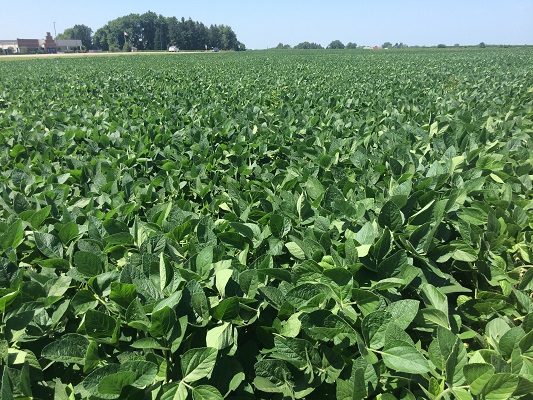News
South Dakota farmer: Rain came in the ‘nick of time’

Waiting has been the hard part. Farmers in many parts of South Dakota, including Kevin Deinert, who farms at Mount Vernon, South Dakota, finally got a shot of rain the week of July 5th. “And so, it’s kind of brightened and perked everything up, thankfully,” said Deinert, the 2nd vice-president of the South Dakota Soybean Association. “The rain came just in time to help push things along and hopefully, give it the boost it needs during one of the more important times of the year,” he said. “Everything’s starting to tassel around here, and that’s when we need moisture the most, as that plant is sure using a lot of water every day.”
Deinert also raises cattle. “We were trying to weather the storm, just like everybody else around here,” he said, referring to his capacity to keep the animals fed. “Grasses are short; forage is starting to look like it’s going to be short as well, so we’ve had to make some management decisions on pasture rotations, stocking rates, and what feed we’re going to utilize here in the upcoming fall to winter.”
Although crops look good despite the severe lack of precipitation to this point, Deinert is concerned about harvesting enough corn for forage to fill bunkers.
“Given the lack of height on some of the corn and not reaching its full potential,” he said, “we’re probably still going to see some tonnage issues when we go to chop it for silage.”
In addition to the drought stress on row crops, Deinert, who moonlights as a crop insurance adjuster, has witnessed first-hand the drought damage to South Dakota’s small grains, such as oats and winter wheat.
“We’ve seen some losses just because we’ve gone too long in the early part of spring without any moisture, and that crop matured without any availability of rain to help push it along and help give it the yield potential it needed,” Deinert said. “I’ve seen oats [now expected to yield] anywhere in the low-20s, and wheat in the 40s-to-50s, depending on where it’s located and the ground that it was planted in.”
So far this season, Deinert hasn’t been adjusting many fields of corn and soybeans, saying it is likely to be later before drought damage to row crops can be accurately determined.
“We’re still a little too early to see what that plant will do yield-wise; no ears have been set. I haven’t seen any pods on beans, even though they are flowering,” he said. “Right now, we’re just waiting. I’m sure hearing through the grapevines that we’re still going to have some losses throughout the southeast part of South Dakota.”
The week before last, Deinert was happy to have accumulated more than an inch-and-a-half of rain, including a pleasant shower leading into last Friday morning, when there was little more than what would be considered a slight possibility for precipitation.
“That 20 percent chance gave us a quarter-inch,” said a relieved Deinert. “If that’s the way it’s going to be all year, I’ll hopefully get a 20 percent chance of rain every day.”

Add Comment